3110009331362
Price Quote Get an up to date pricing and availability quote for this product. Order online or over the phone.
Quality Commitment
Serving our customers with quality and safety first.
- AS9120 Certified
- Audited supply chain
- ITAR Registered
- DDTC Registered
- HAZMAT Certified
- Customer service objectives
- Every product 100% inspected

3110-00-933-1362 Specification Set by the OEM (see RNCC code 3)
12.00 mm
20.00 mm
42.00 mm
ground
machined
angular
straight
standard
abec no.1
25.0 degrees
7surface finish - balls 2 microinches aa, ring faces and id surface 40 microinches aa, od surface and lips inner ring 32 microinches aa, outer ring raceways 15 microinches aa, inner ring raceways 12 microinches aa, one outer lip 125 microinches aa and other lip 90 microinches aa; stabilized for operation to 350 deg f; id perpendicular to inner ring face within 0.0008 in. and concentric w/inner ring raceways within 0.0005 in. tir, od perpendicular to outer ring face within 0.0008 in. and concentric w/outer ring raceways within 0.0008 in. tir inner ring faces parallel within 0.0008 in., center inner ring raceway parallel to ring face within 0.0008 in., outer ring faces parallel within 0.0008 in., center outer ring raceway parallel to ring face within 0.0012 in.
steel comp E50100 outer ring and steel comp E51100 outer ring and steel comp E52100 outer ring
astm A295 assn std all material responses inner ring
counterbored outer ring, NON-Separable
Cross Reference Parts Part numbers that meet the specification outlined on this page and set by the OEM
Identification Item Identification Guide (IIG) and Item Name Code (INC)
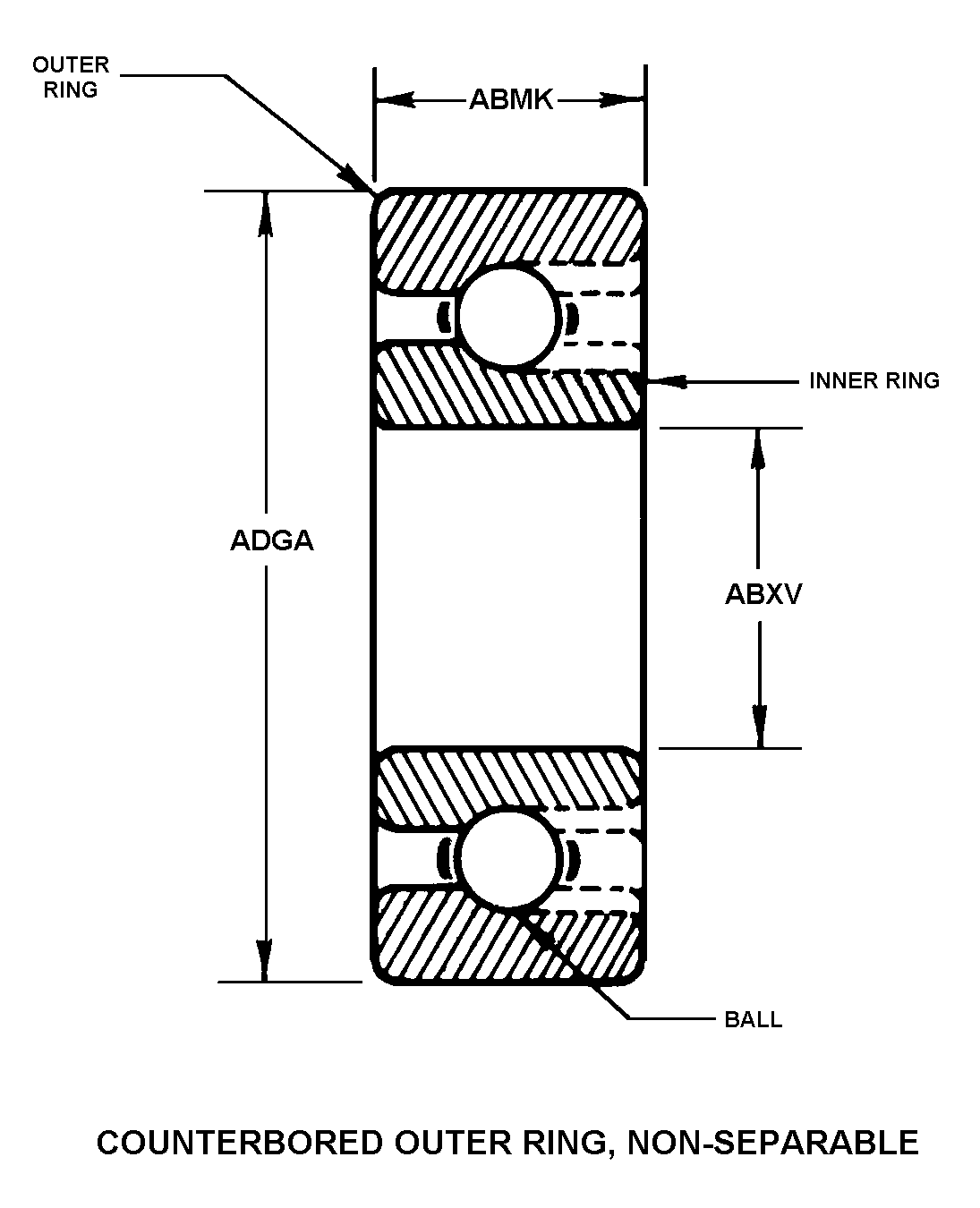
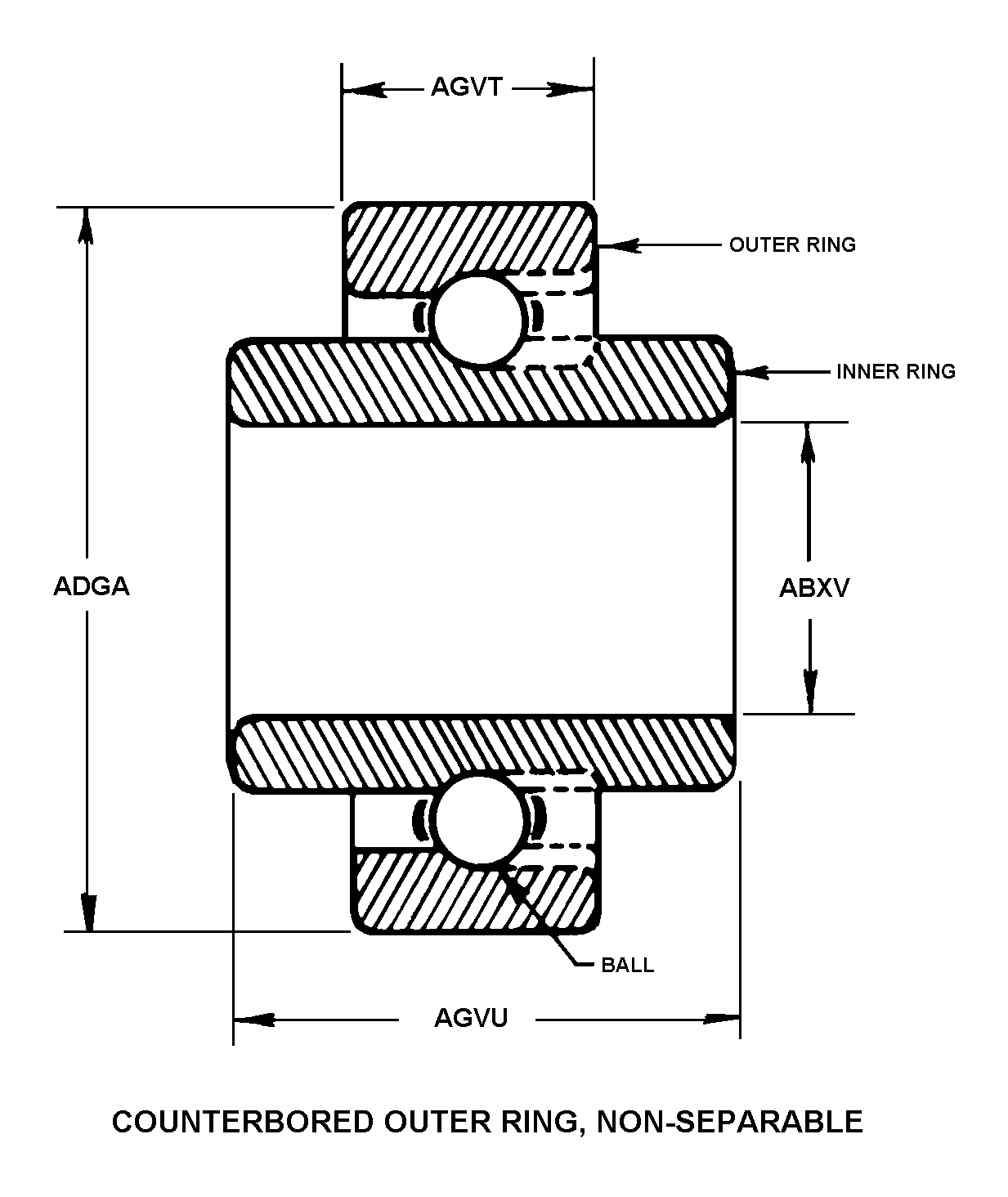
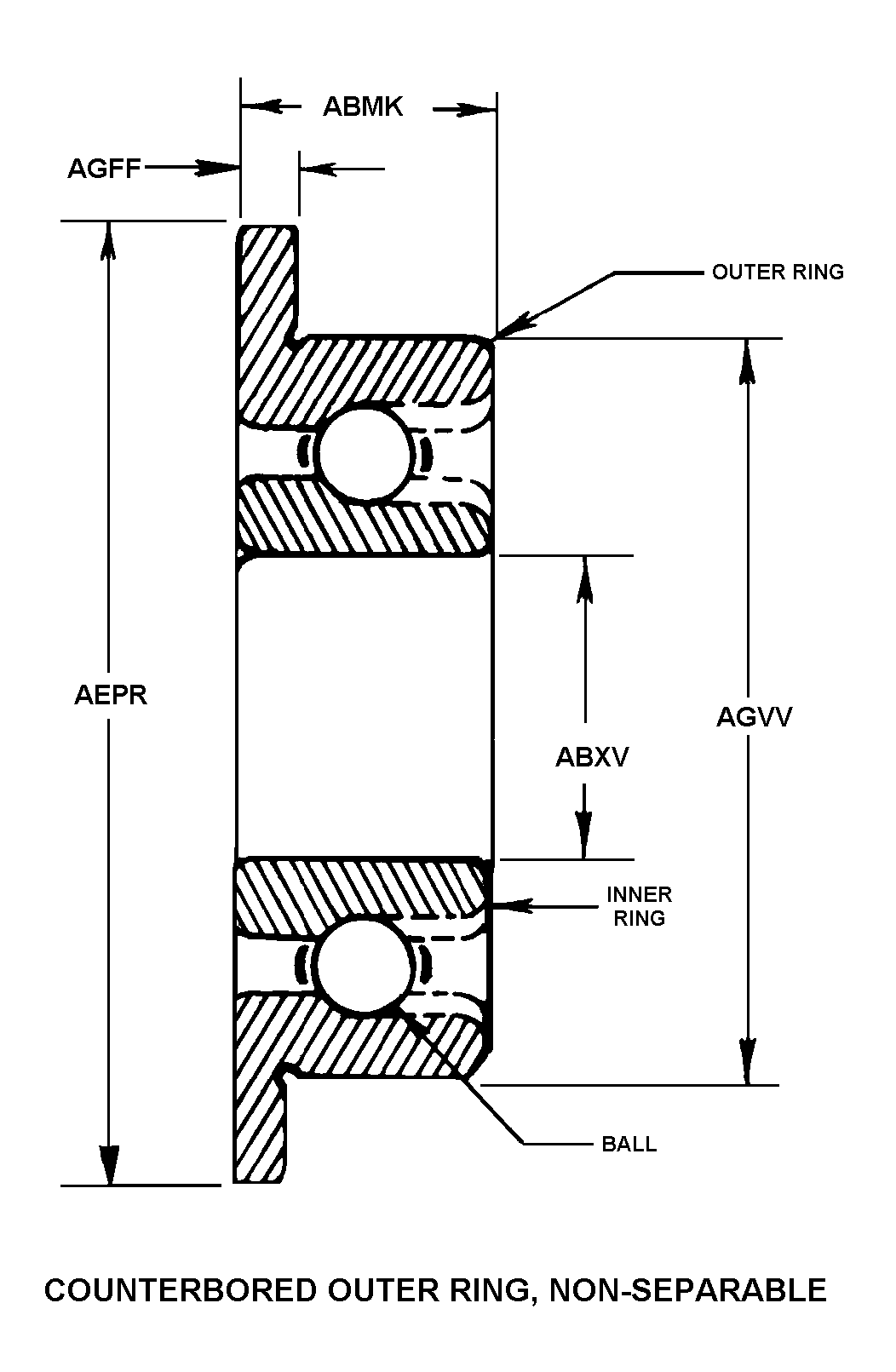
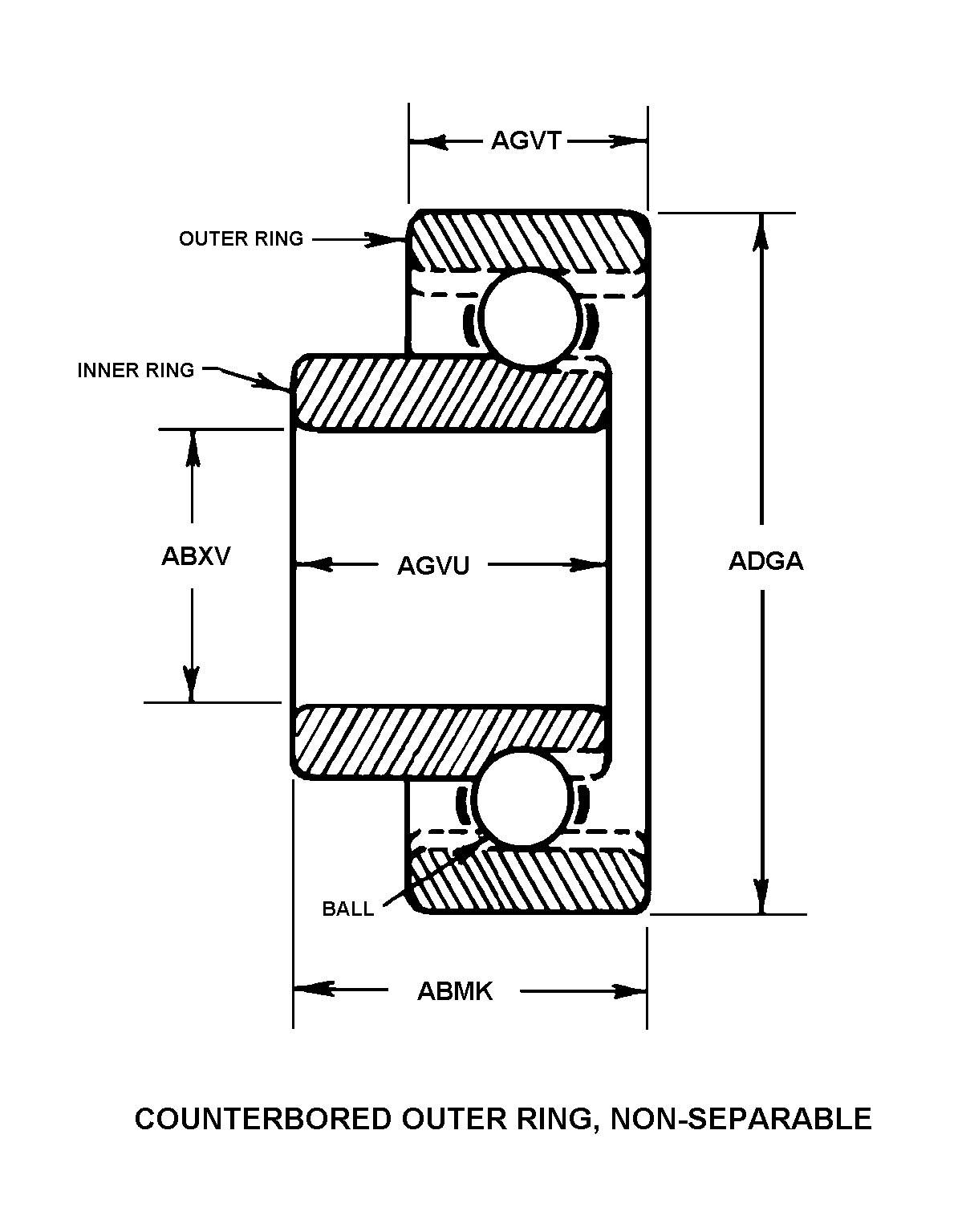
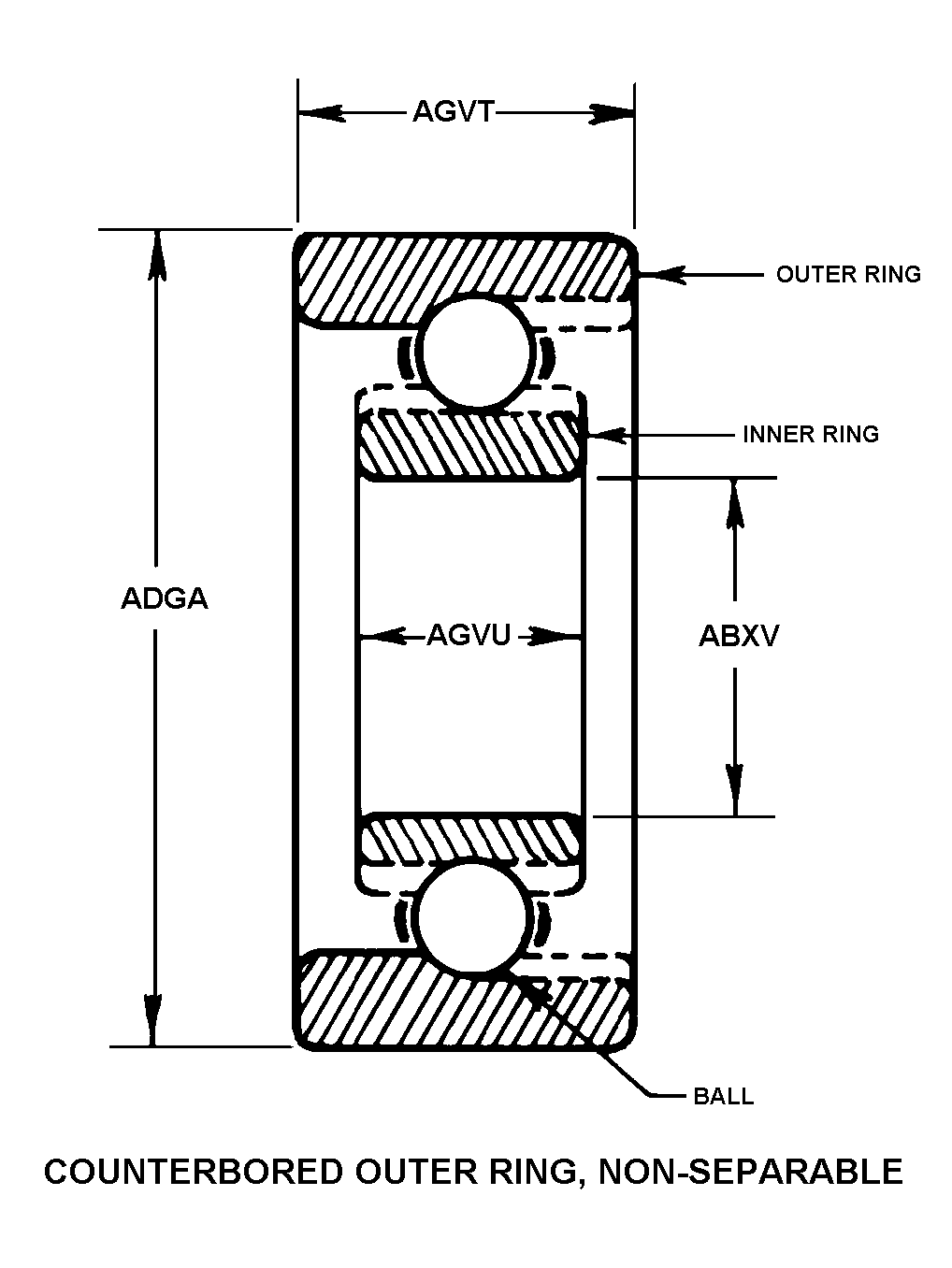
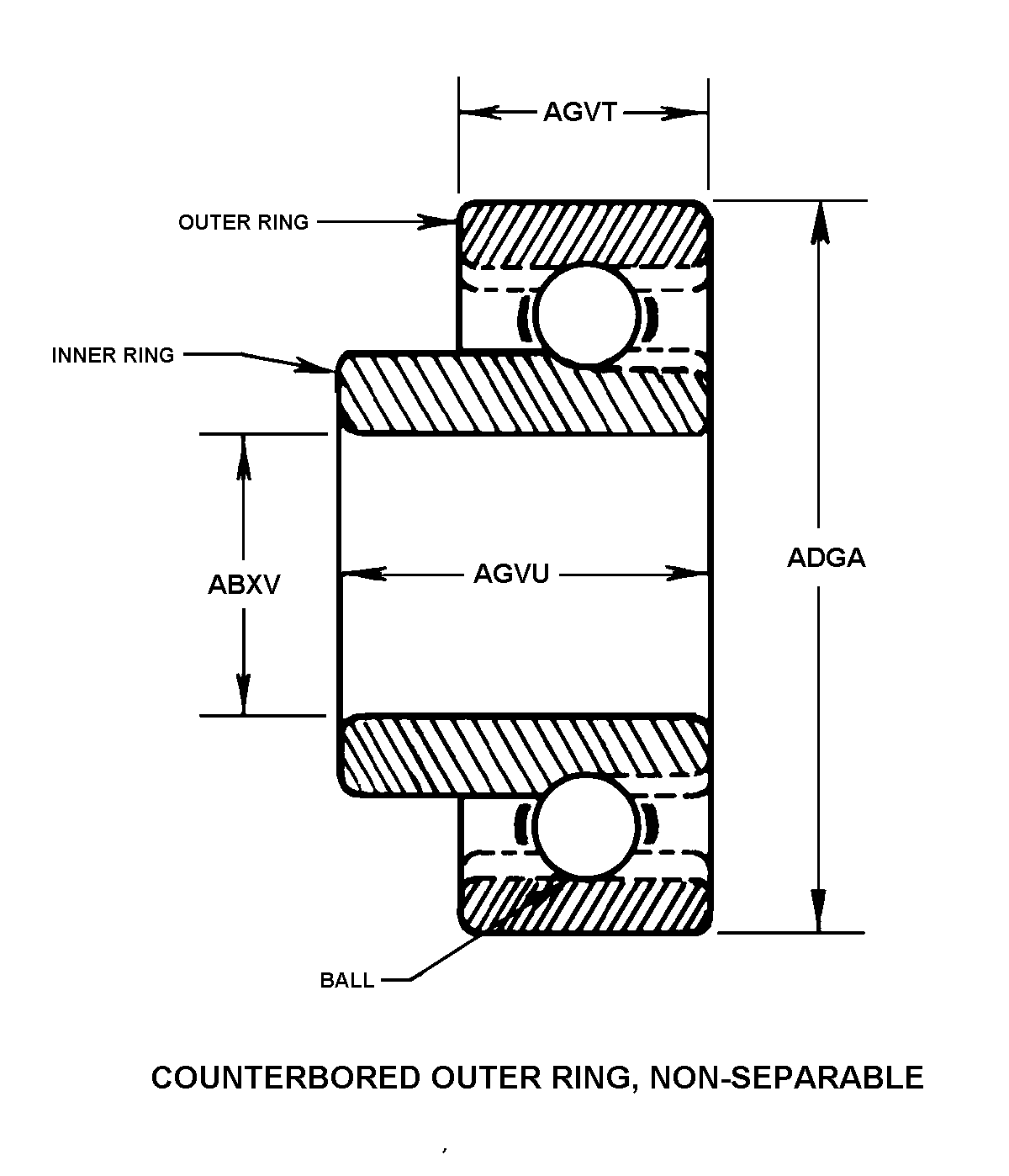
Definition Definition of approved item name (AIN): "BEARING,BALL,ANNULAR"
A cylindrical device in which the inner or outer ring turns upon a single or double row of hardened balls which roll easily between the two rings, thus minimizing friction. For items with faces specially ground for duplex mounting see bearing, ball, duplex. Excludes bearing, ball, airframe.
3110-00-933-1362 Material Hazmat, Precious Metals, Criticality, Enviroment, and ESD
Indicates there is no data in the hmirs and the nsn is in a fsc not generally suspected of containing hazardous materials.
Precious metal content is unknown
The item does not have a nuclear hardened feature or any other critical feature such as tolerance, fit restriction or application.
Identification Codes
HMIC: Hazardous Material Indicator Code. A one position code that identifies a hazardous item.
PMIC: Precious Metal Indicator Code. A one position code which identifies items that have precious metals as part of their content. precious metals are those metals generally considered to be uncommon, highly valuable, and relatively superior in certain properties such as resistance to corrosion and electrical conductivity.
ESD: Electrostatic Discharge. Indicates if an item is susceptible to electrostatic discharge or electromagnetic interference damage. electrostatic discharge damage occurs when an accumulation of static electricity generated by the relative motion or separation of materials is released to another item by direct contact. electromagnetic interference damage occurs when an item comes into proximity with an electrostatic or magnetic field.
ENAC: Enviromental Attribute Code. Identifies items with environmentally preferred characteristics.
CRITL: Criticality Indicator Code. Indicates an item is technically critical by tolerance, fit, application, nuclear hardness properties, or other characteristics.






